by GardenLover | Feb 16, 2016 | Gardens to Drive
Cold frames, row covers extend the growing season
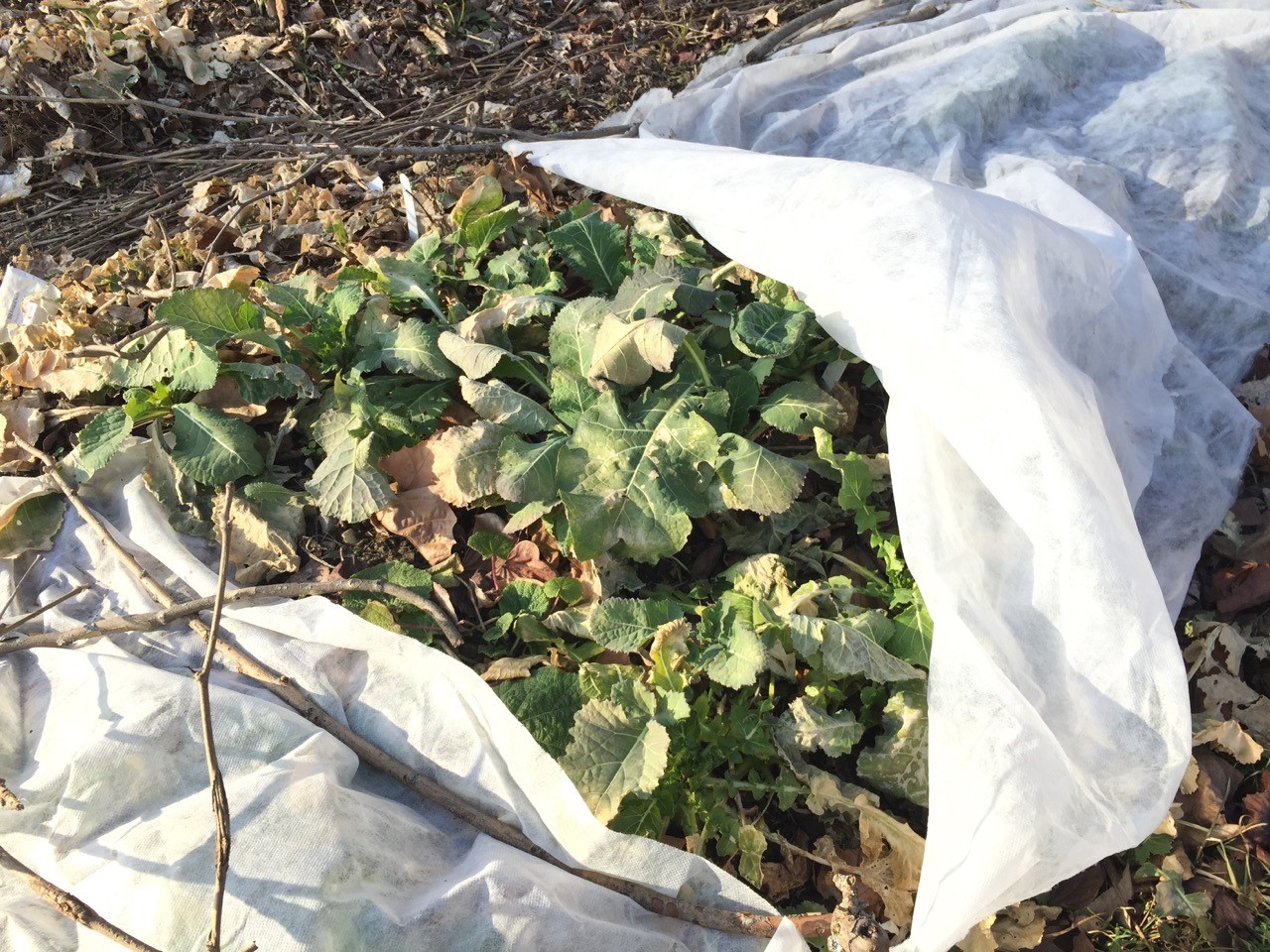
Row covers seem to reduce wind burn, allowing cold-tolerant greens a chance to survive winter. I picked a few leaves from these collards, planted in late summer, in early February.
By Michael Leach
Perhaps a pinch of pixie dust would make cold frame gardening more appealing.
Cold frames, solar-heated grow boxes, are as utilitarian as shovels and trash cans. Mine, constructed of salvaged bricks (for passive solar heating) and a window sash from an old aluminum storm door, is especially homely. Although a commendable example of up-cycling, it’s hardly worthy of Martha Stewart.
Fairy gardens, on the other hand, appeal to the imagination. This is where Barbie does gardening with cute little plants and adorable accessories to match every outfit. Macho versions also exist, from farms and ranches to Jurassic jungles with plastic dinos. No doubt succulent-studded landscapes worthy of Star Wars also exist somewhere in the galaxy.
Despite its lack of visual appeal, the cold frame oozes charm. It’s an excuse to dabble in the dirt long before (or after) the growing season. For cabin fever crazed green thumbs, this is as much a draw as the most elaborately accessorized fairy garden.
The only accessory in my cold frame is a row marker for the kale planted January 30.
Yes, January 30. That’s part of the appeal of cold frame gardening, a chance to plant in a reasonably safe environment “when all aloud the wind doth blow … and birds sit brooding in the snow … .” as Shakespeare observed. Beneath the glass cover, the wind won’t blow the little kale, spinach, collards and other tough greens. Inside their miniature world, the weather is more late-March or early April, which is about planting time outside in this part of the Midwest. And that’s only if soil and weather conditions cooperate.
Besides an early start, I’ve found the cold frame eliminates the tedious business of coddling seedlings for weeks indoors under lights or on windowsills. This is child’s play for many growers but somehow I usually manage to dump trays when watering or being klutzy.
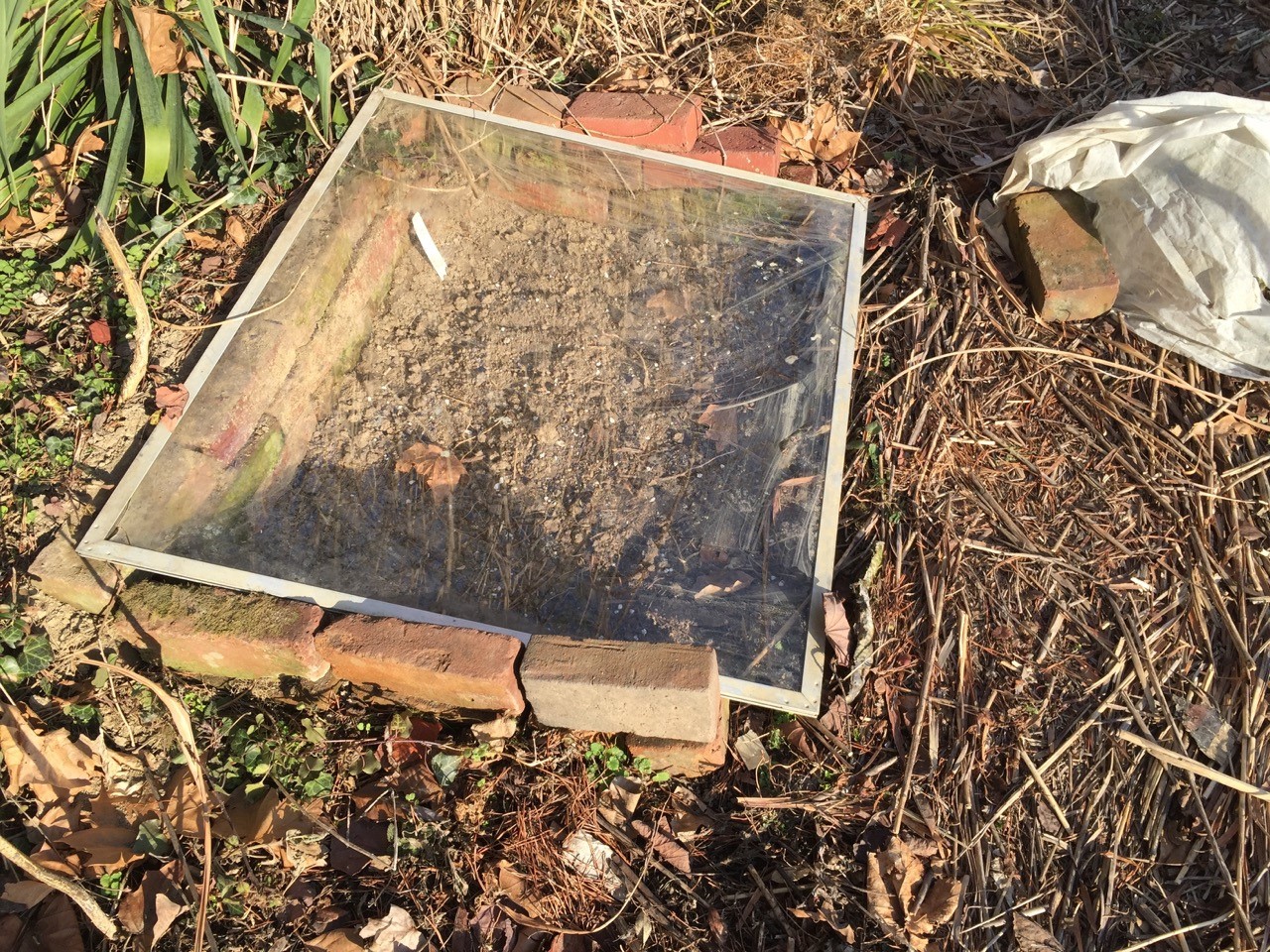
Cold frames can be constructed of many types of materials. Mine is made of salvaged bricks and a window sash.
Cold frames aren’t foolproof. Because a vicious blast of late winter might prove too much, additional sowings are planned about every two weeks or so.
Another threat is neglect. Even cool sunny days can turn a cold frame into a solar oven. Monitoring is a must to keep the lid ajar as needed. Temperature controlled hinges are available for ambitious gardeners. They’re the sort who use cold frames for: wintering plants of questionable hardiness, forcing spring-flowering bulbs, starting summer flower and vegetable seeds, and sowing fall crops that will linger into winter.
Besides cold frames, floating row cover serves as a season extender. The lightweight fabric is made specifically for agricultural purposes. The sort I use is designed to ward off insects not frost. Yet it has been sufficient most years to help spring-planted greens survive all winter and produce a flush of new foliage the following spring. When this happens, the plants eventually burst into sprays of cheery yellow flowers that delight bees.
Googling “cold frames” and “floating row cover,” not to mention checking the gardening sections of public libraries, produce a plethora of ideas for creating and using these warming environments for early — and late — season gardening.
Now that I think about it, maybe a miniature red tractor and some tiny fencing would add a dash of whimsical charm to the kale seedlings when they emerge.
by GardenLover | Feb 10, 2016 | Catch Us
Upcoming Talks and Stories for Heartland Gardening Bloggers

Heartland Gardening bloggers Debra Knapke, Teresa Woodard and Michael Leach recently met for a brainstorming session at Fox in the Snow café in Columbus.
The Heartland Gardening bloggers have a busy spring ahead. Catch them at the following events and look for their stories in the following magazines:
Debra Knapke
- Feb. 14: Debra will present two talks at the OEFFA conference in Granville — What is a Plant? and Polycultures and Garden Guilds.
- Feb. 24: Debra will be speaking to the 2016 Delaware Master Gardener class about Annuals and Perennials.
- March 5: Debra will be speaking on Sustainable Gardens at Wegerzyn Gardens in Dayton.
- March 17: Debra will be traveling to Connecticut to present The Garden Aesthetic in a Time of Global Climate Change at the UConn Sustainable Landscape Conference
- March 19: Debra will be presenting at the Oakland Nursery Spring Fling.
- April 8: Debra and her daughter, Sarah Arevalo, will be presenting Complementary Design: Embracing Inside and Out at LABash 2016 at The Ohio State University.
- May 9: Debra will be presenting at the Gahanna Annual Herb Day
- May 27: Debra will give a talk at Holden Arboretum for the Council of Botanical and Horticultural Libraries. Her topic is: Books, Botany and Horticulture– a Beautiful Combination.
Michael Leach
- Feb. 20-28: As the garden stage manager at the Columbus Home & Garden Show at the Ohio Expo Center, Michael Leach has recruited a speaker line-up who will cover everything from backyard beekeeping to growing your own vegetables.
- Feb. 21, 11 a.m.: Michael will present “Healing Gardens” at the Columbus Home & Garden Show.
- Spring issue: Michael’s garden will be featured in the spring issue of Columbus Monthly’s Home & Garden.
Teresa Woodard
by GardenLover | Jan 20, 2016 | Catch Us
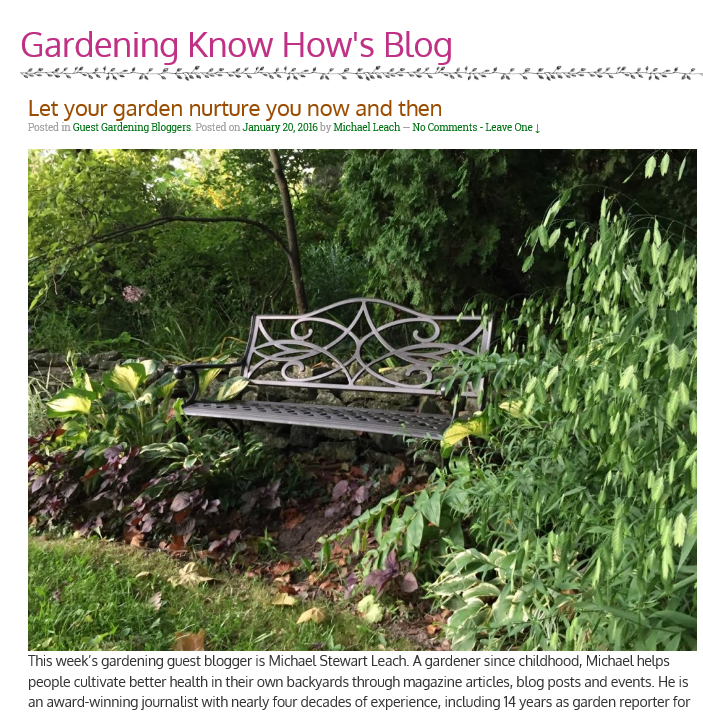 Check out Michael’s guest blog (January 20) at Gardening Know How and learn that it’s OK to sit down in the garden and let it nurture you.
Check out Michael’s guest blog (January 20) at Gardening Know How and learn that it’s OK to sit down in the garden and let it nurture you.
Gardening Know How helps novice and seasoned gardeners discover easy ways of cultivating the passion of growing everything from houseplants to edibles. To date, the website has answered over 45,000 direct questions about gardening, and over 60 million people come to visit the site every year.
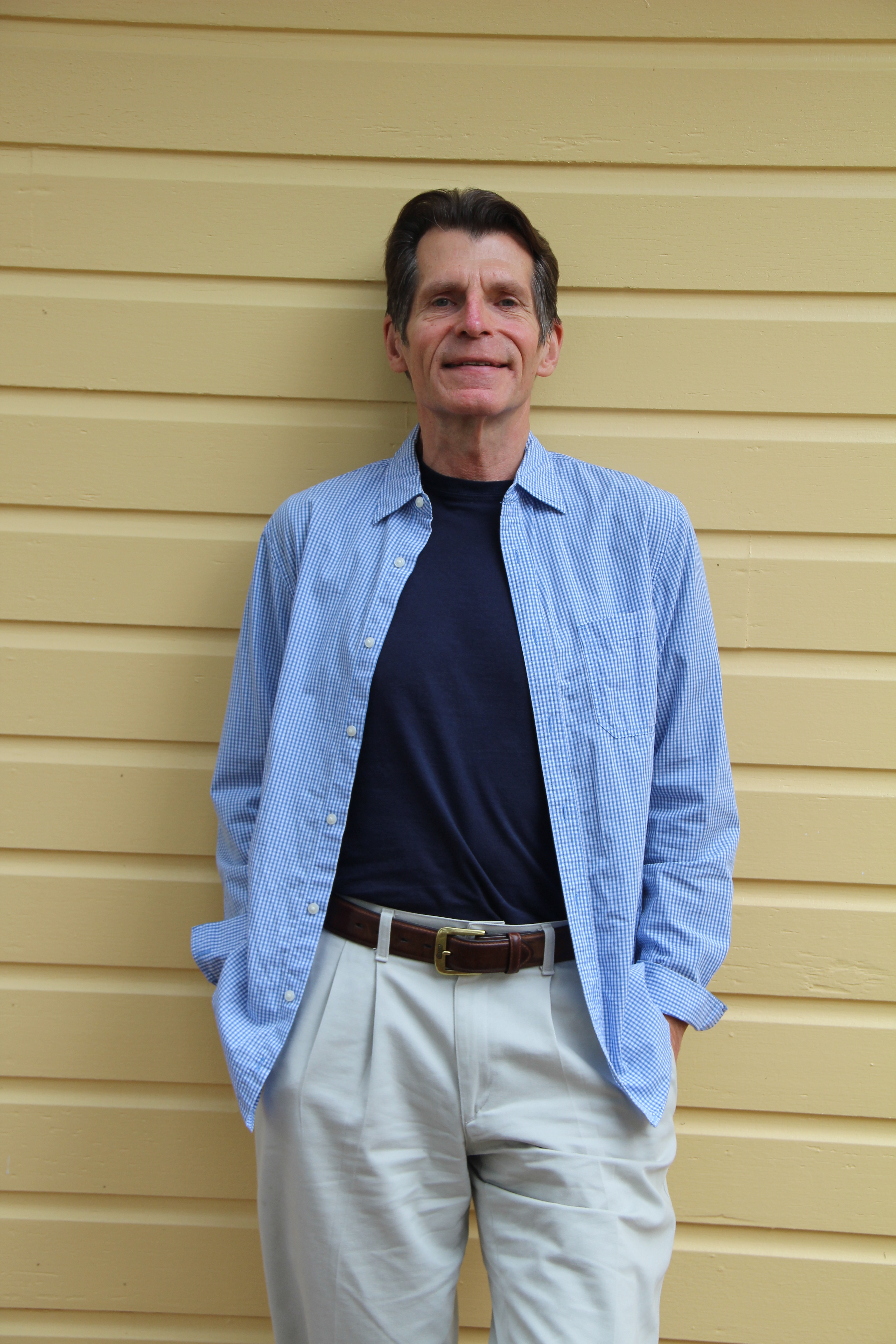
by GardenLover | Jan 14, 2016 | Trendspotting
Bugs, Biophilia and Boldness
By Teresa Woodard
Hello, 2016! At Heartland Gardening, we ring in the new year with a trends round-up including some highlights from this week’s CENTS convention (Central Environmental Nursery Tradeshow) at the Greater Columbus Convention Center in downtown Columbus.
some highlights from this week’s CENTS convention (Central Environmental Nursery Tradeshow) at the Greater Columbus Convention Center in downtown Columbus.
· Embracing bugs – Today, more than ever, gardeners are appreciating insects’ important roles not just as pollinators but also as decomposers and predators to manage insect populations. They’re adding plants to attract beneficial bugs and rethinking pesticide practices that can harm them. According to Bug Lady Suzanne Wainwright-Evans, beneficial bugs bring a $4.5 billion value to the green industry. She shared a link to helpful plant lists from Penn State’s pollinator trial gardens.
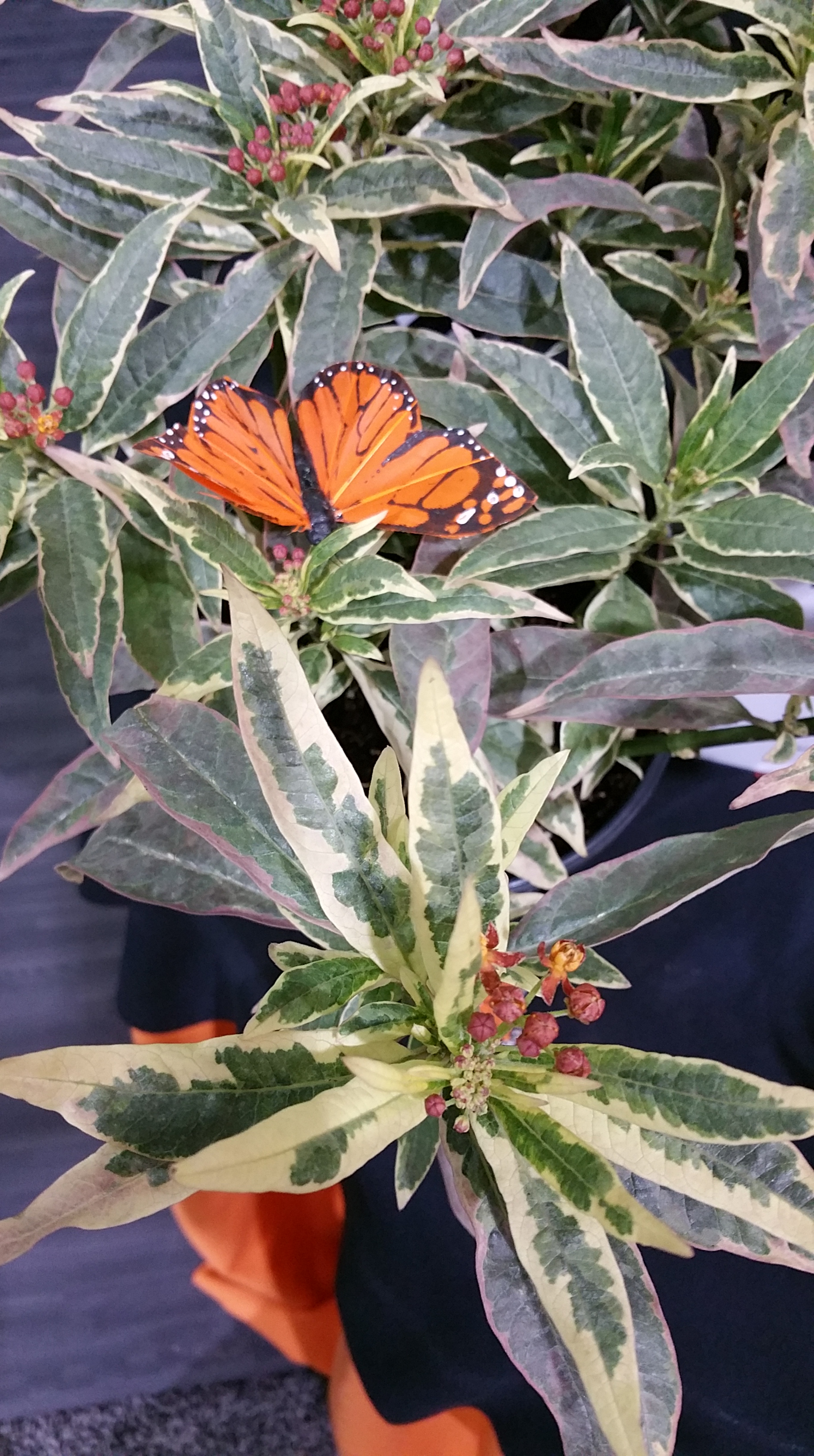
A new variegated milkweed (Asclepias ‘Monarch Promise’)
· Designing biophilic – Economist Charlie Hall says biophilic design is today’s hottest architectural trend. Architects and landscape designers are adopting biophilic design elements to bring nature’s healing qualities to today’s homes and landscapes. Think green roofs, green walls, natural lighting, water features and green infrastructure.
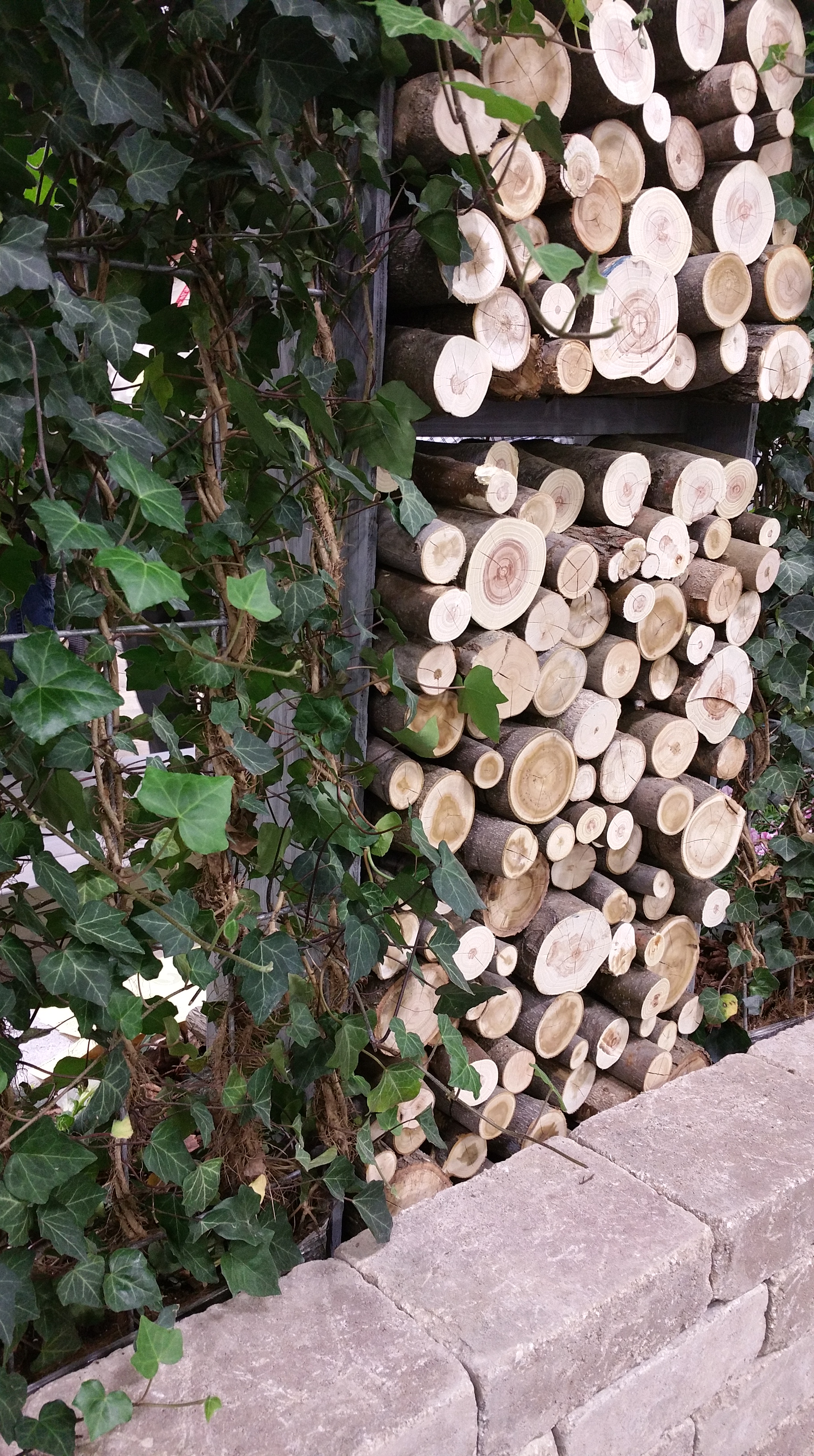
Biophilia design elements like green walls, green roofs and green infrastructure
· Changing demographics – Hall also says two changing demographic groups – Millennials (ages 18-34) and Baby Boomers (ages 51-69) will offer opportunities for the green industry. As the Millennials begin to buy homes, they will be adding landscapes, and as Baby Boomers age they will demand more landscape services to maintain their properties.
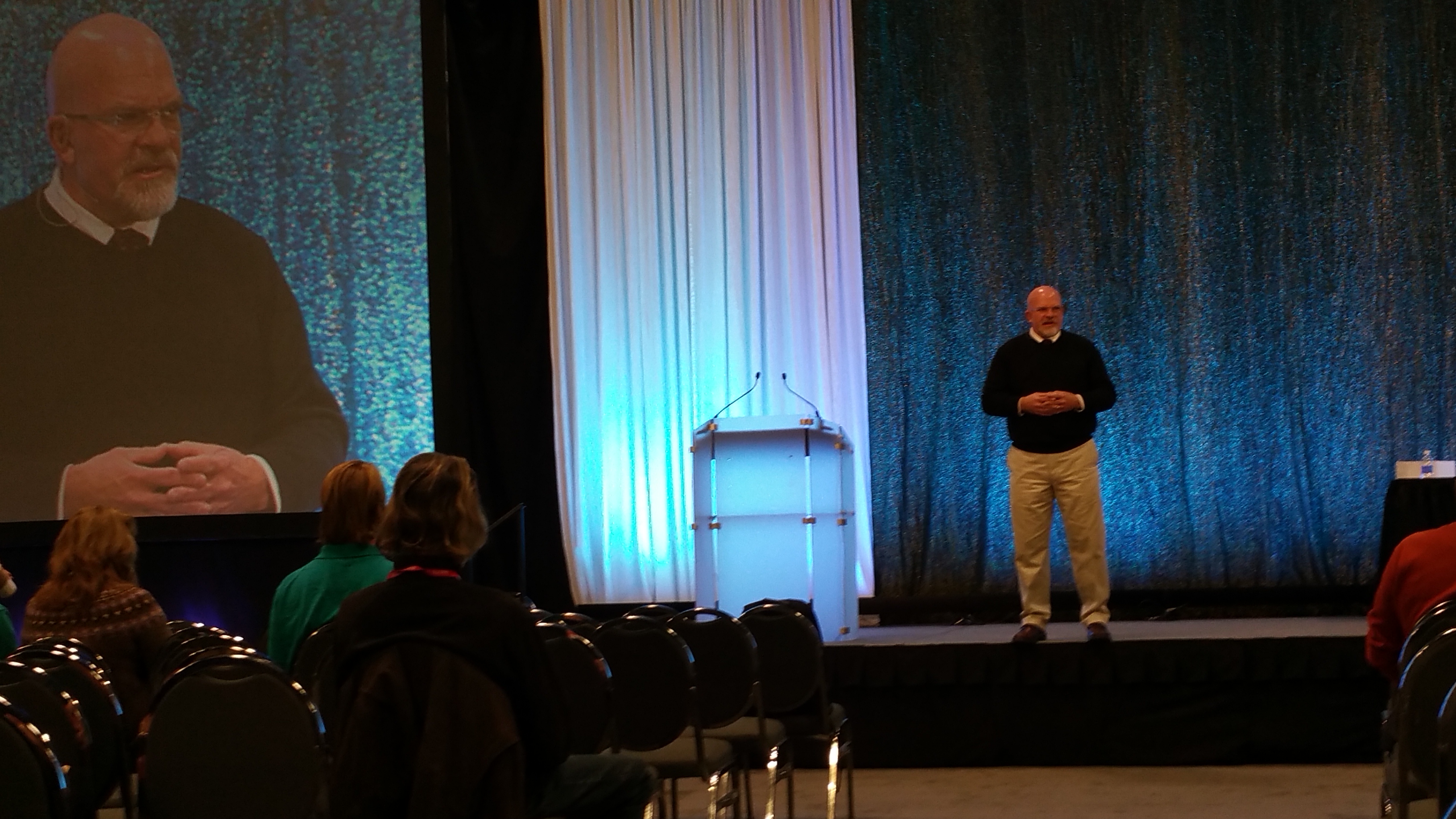
Economist Charles Hall at CENTS 2016
· Growing edibles – More and more nurseries are jumping on the edibles trend, so consumers will have even more options at their local garden centers. At the CENTS show, Debra Knapke presented on “Native Edibles” and said that adding plants that have multiple functions, edibility being one of them, is a way to build functional plant communities.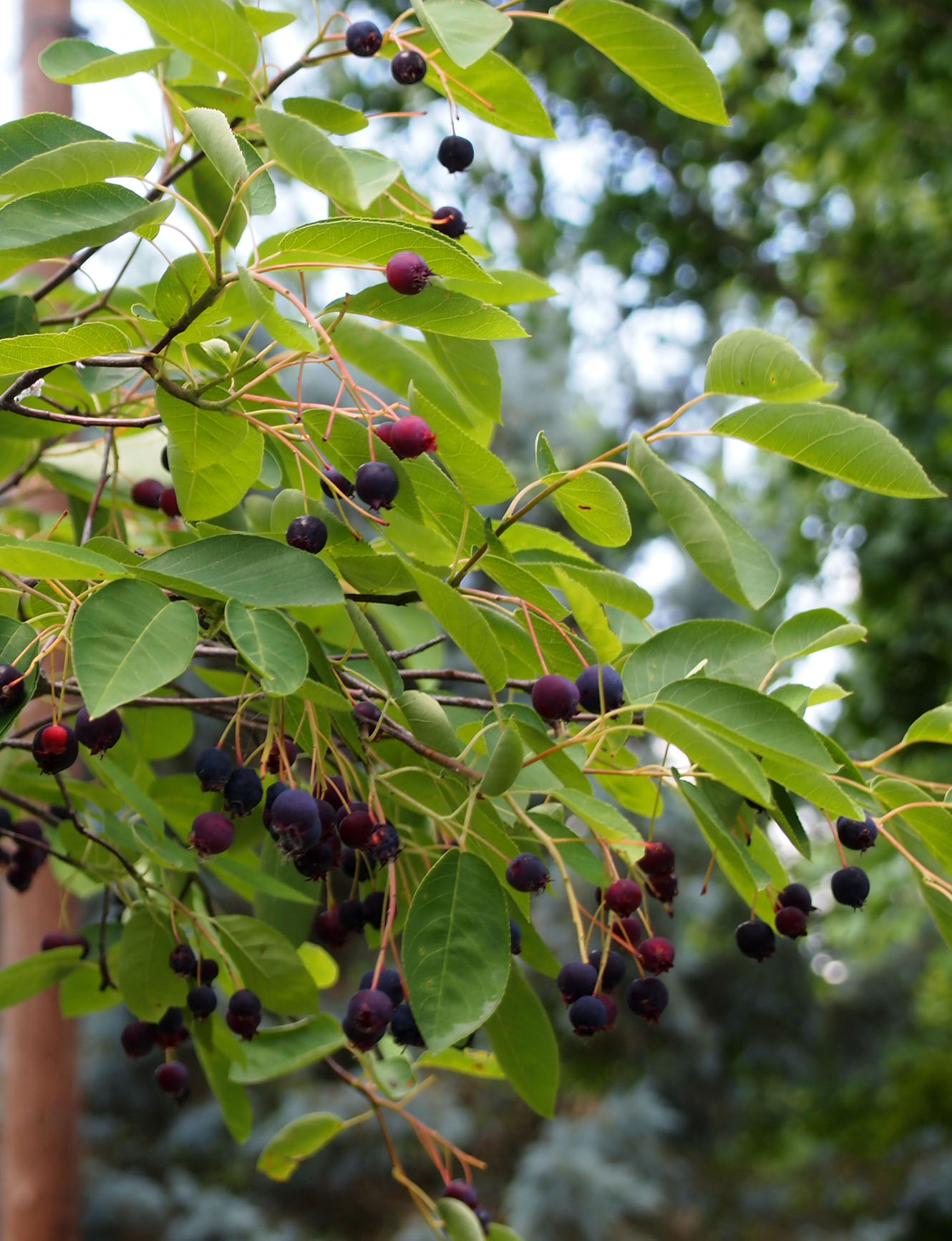
· Bold backyards — The Garden Media Group reports homeowners are taking a bolder approach to outdoor living. Customization, new lighting and sound options are driving the trend for these ultra-personalized backyards. Homeowners are moving away from subtle, minimalist aesthetics toward designs that heighten sensory appeal. At the CENTS show, we saw bold tropicals, striking succulents and beautiful porcelain outdoor tiles. In the color palette, orange and sangria continue to be popular colors. Pantone, the global color authority, recently announced its colors of the year for 2016: Rose Quartz and Serenity (muted shades of pink and blue). We’ll have to wait and see how these pale colors play out in the horticulture world in the next season or two.
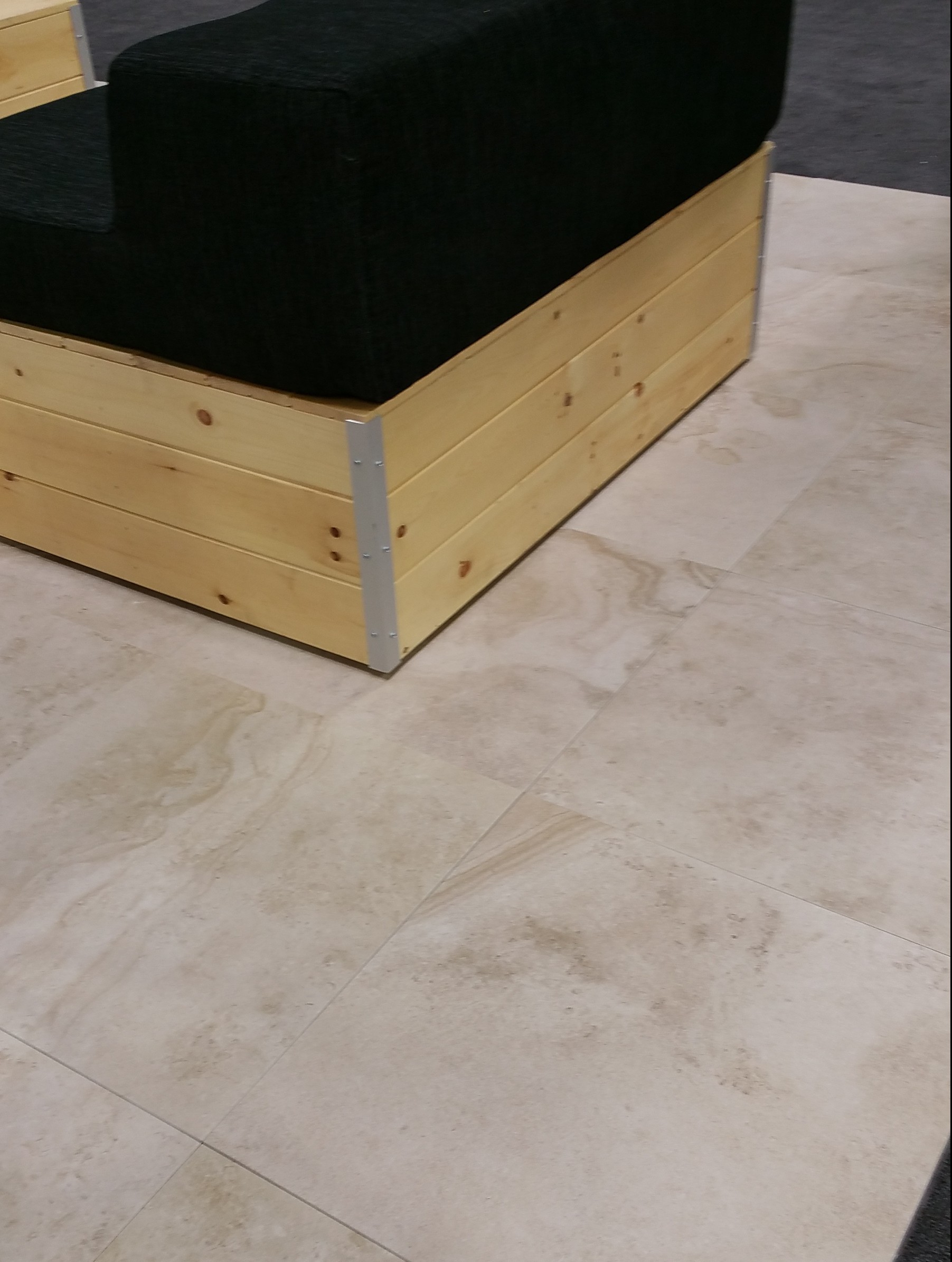
Porcelain outdoor tiles showcased at CENTS 2016
by GardenLover | Jan 8, 2016 | Catch Us, Happenings
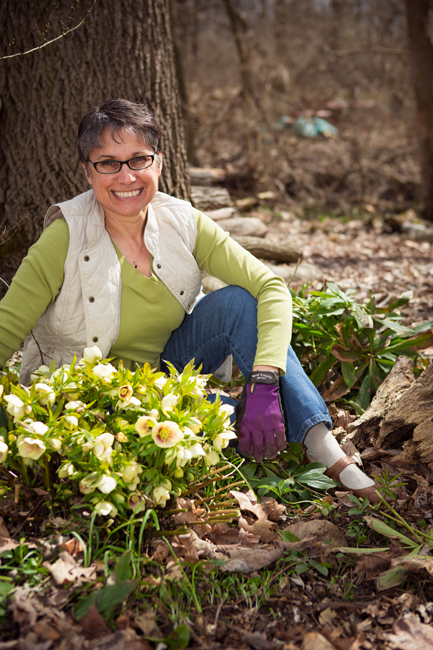 Heartland Gardening blogger Debra Knapke will be speaking next week at the CENTS (Central Environmental Nursery and Tradeshow),
Heartland Gardening blogger Debra Knapke will be speaking next week at the CENTS (Central Environmental Nursery and Tradeshow),
the Midwest’s largest green industry convention hosted by the Ohio Nursery & Landscape Association at the Greater Columbus Convention Center, Jan. 11-13. She will present “The Garden Aesthetic” on Tuesday and “Edible Native Plants” on Wednesday. She also will present “Garden Design Informed by Ecology & Place” at the pre-conference event — the P.L.A.N.T. Seminar hosted by the Perennial Plant Association and the Ohio State Master Gardener Volunteers. 
As a member of ONLA’s education committee, Debra says this year’s speaker line-up is exceptional thanks to the work of Lisa Larson, ONLA’s education director. Speakers include book author Kerry Mendez, economist Charlie Hall, master plantsman Kelly Norris, Jeni Britton Bauer — founder of Jeni’s Ice Cream, Bill Hendricks of Klyn Nursery, Susan Weber of Integrity Sustainable Planning & Design, and a series of presentations from horticulturists from the country’s top public gardens.
CENTS (Central Environmental Nursery and Tradeshow) is an annual convention hosted by the (ONLA). ONLA is a high-energy association where landscape, nursery, greenhouse, arbor, garden center, turf and pest management professionals can meet, learn, network, buy and sell the goods and services vital to their success.




 Check out Michael’s
Check out Michael’s 








